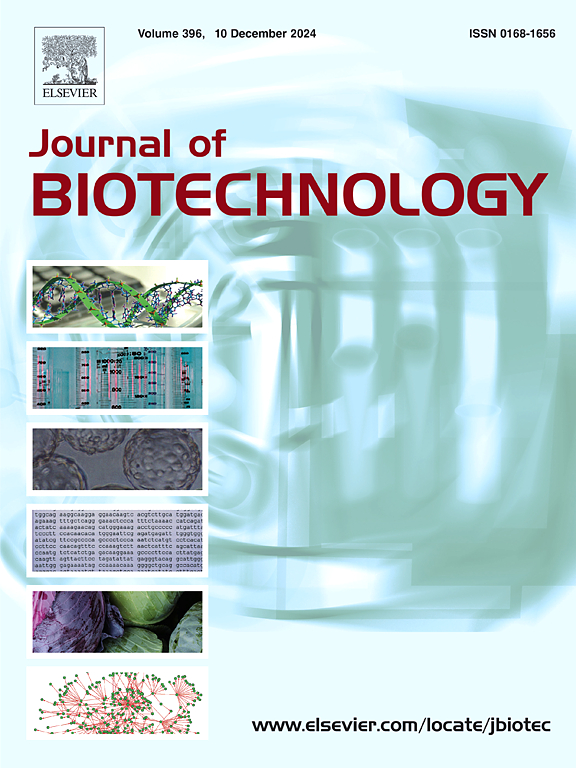Production of astaxanthin with high purity and activity based on engineering improvement strategies
IF 3.9
2区 生物学
Q2 BIOTECHNOLOGY & APPLIED MICROBIOLOGY
引用次数: 0
Abstract
Here, astaxanthin production in Escherichia coli was systematically improved step by step. By introducing the additional copy of CrtZ and fusion complex of CrtZ and CrtW, astaxanthin content in cells increased from 0.10 mg/g to 0.16 mg/g and 0.63 mg/g DCW, respectively. Remolding the astaxanthin gene cluster by replacing the PanCrtE by HpGGPPS3–1 and the fusion of CrtZ and CrtW increased astaxanthin content to 1.98 mg/g DCW. Further selecting the productive host and optimizing culture conditions dramatically increased astaxanthin content to 3.61 mg/g DCW. Subsequently, the fed-batch fermentation achieved the maximum yield of astaxanthin at 509.58 mg/L with the productivity of 7.72 mg/L/h and 5.91 mg/g DCW, covering 98.17 % of detected carotenoids. The chirality analysis assigned the same isomer of astaxanthin extracted from our fermentation system and Haematococcus pluvialis. Moreover, the radical and superoxide anion scavenging activity analysis revealed that astaxanthin achieved in this study performed better than natural astaxanthin extracted from H. pluvialis and chemical synthetic astaxanthin. This study provides a step-by-step example for bioengineering improvement of natural products in E. coli with high purity and activity.
基于工程改进策略的高纯度、高活性虾青素的生产
本研究逐步系统地提高了大肠杆菌虾青素的产量。通过引入额外的CrtZ拷贝和CrtZ与CrtW的融合复合体,细胞中虾青素含量分别从0.10 mg/g增加到0.16 mg/g和0.63 mg/g DCW。用hpggpps1 - 1取代PanCrtE重组虾青素基因簇,将CrtZ和CrtW融合,使虾青素含量提高到1.98 mg/g DCW。进一步选择生产寄主并优化培养条件,虾青素含量显著提高至3.61 mg/g DCW。随后,分批补料发酵的虾青素产量最高,为509.58 mg/L,产率为7.72 mg/L/h和5.91 mg/g DCW,覆盖了98.17 %的检出类胡萝卜素。手性分析表明,从发酵体系中提取的虾青素与雨红球菌具有相同的同分异构体。此外,自由基和超氧阴离子清除活性分析表明,本研究获得的虾青素清除自由基和超氧阴离子的能力优于天然虾青素和化学合成虾青素。本研究为高纯度、高活性的大肠杆菌天然产物的生物工程改良提供了一步一步的范例。
本文章由计算机程序翻译,如有差异,请以英文原文为准。
求助全文
约1分钟内获得全文
求助全文
来源期刊

Journal of biotechnology
工程技术-生物工程与应用微生物
CiteScore
8.90
自引率
2.40%
发文量
190
审稿时长
45 days
期刊介绍:
The Journal of Biotechnology has an open access mirror journal, the Journal of Biotechnology: X, sharing the same aims and scope, editorial team, submission system and rigorous peer review.
The Journal provides a medium for the rapid publication of both full-length articles and short communications on novel and innovative aspects of biotechnology. The Journal will accept papers ranging from genetic or molecular biological positions to those covering biochemical, chemical or bioprocess engineering aspects as well as computer application of new software concepts, provided that in each case the material is directly relevant to biotechnological systems. Papers presenting information of a multidisciplinary nature that would not be suitable for publication in a journal devoted to a single discipline, are particularly welcome.
 求助内容:
求助内容: 应助结果提醒方式:
应助结果提醒方式:


